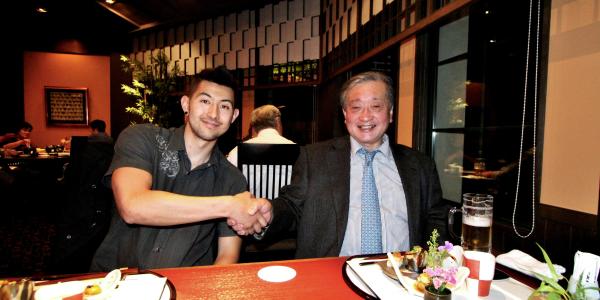Cultures and Languages Across the Curriculum uses foreign languages as a tool to ‘open new avenues of inquiry and communication to enhance whatever you are studying’
At a historical and political moment when millions of Americans seem less than keen to make global connections and embrace different cultures, a nascent program at the Center for Asian Studies at the University of Colorado Boulder is taking the opposite tack.
Launched in 2017 with an undergraduate education development grant, the Cultures and Languages Across the Curriculum program “supports student learning in disciplinary courses by creating opportunities for them to use their skills in languages other than English.”

Danielle Rocheleau Salaz, executive director of the Center for Asian Studies at CU Boulder.
The goal is to help students broaden their perspectives by using the lens of a second language.
“The idea is, language shouldn’t just be looked at as an object of study, the way you might think about math. It’s also a tool that can open new avenues of inquiry and communication to enhance whatever you are studying … if you have additional (non-English) language skills you can bring to any subject,” says Danielle Rocheleau Salaz (MJpn’00), executive director of the Center for Asian Studies and the driving force behind CLAC at CU Boulder.
Salaz got her first taste of the concept in 2006, when she attended a meeting of the CLAC Consortium. Somewhat diffuse—“It’s not one-size fits all,” she says—the concept has been realized in everything from service-learning to content-based education models and alternative modes of education that “foster the acquisition of cross-cultural competencies,” according to the consortium.
“Students (use) supplementary materials to get different perspectives and enhance their understanding of the concepts presented in the parent courses,” Salaz says.
At CU, the result so far has been five one-credit “co-seminars” attached to existing courses, ranging in subject matter from Islam to Indo-Pakistani literature. In the co-seminars, students work with materials in non-English languages, which can broaden their understanding of different cultures. Often, students report back to the parent class, sharing what they’ve learned in the co-seminar.
Students also may study English-language materials published in non-English-speaking countries and cultures.
“One example is using English-language newspapers from around the world to see how they cover a big story,” Salaz says. “Take a plane crash: In one (outlet) some high-level person may be apologizing, in another there are photos of crying families, in another a photo of wreckage. That’s the ‘c’ in CLAC: What can this tell us about the world and the people who live in those places?”
One example is using English-language newspapers from around the world to see how they cover a big story. Take a plane crash: In one (outlet) some high-level person may be apologizing, in another there are photos of crying families, in another a photo of wreckage. That’s the ‘c’ in CLAC: What can this tell us about the world and the people who live in those places?”
Students of all different abilities, from native speakers to novices, have signed up for the co-seminars. They must be enrolled in the parent course, but enrollment in the co-seminar is optional, and professors define for themselves what the language requirements should be.
For example, during the fall 2018 semester, four students enrolled in Assistant Professor of Hindi/Urdi Rahul Parson’s course, “The Power of the Word: Subversive and Censored Twentieth Century Indo-Pakistani Literature,” signed up for a co-seminar. Students in the co-seminar read texts in Hindi at whatever pace matched their familiarity with the language, ranging from intermediate to advanced.
“My motivation behind enrolling was to further my reading and speaking skills in Hindi. … It brings about a whole new perspective on the time and culture of the piece written,” neuroscience major Mancy Shah said while taking the course. “I really like the fact that this co-seminar is small. It allows for a more in-depth and detailed discussion. Also, with everyone having similar backgrounds in Hindi, it allows for a new interpretation of the text over the translation that we have also read in English.”
For now, CLAC is limited to Asian languages at CU Boulder, though the Center for Asian Studies is hoping it will gain traction with other world languages. Ideally, Salaz says, CLAC can expand cultural perspectives through foreign languages in all corners of campus. This kind of innovation can help CU meet its goals for internationalizing the curriculum, providing student-centered learning opportunities, and promoting interdisciplinarity, all key priorities in the Academic Futures initiative.
“Instead of looking at such students as if their English isn’t up to par, it shows that we really value international students that bring additional language skills, whether in Chinese, Japanese, Korean or Arabic,” she says. “It’s a way to celebrate our differences as strengths.”



